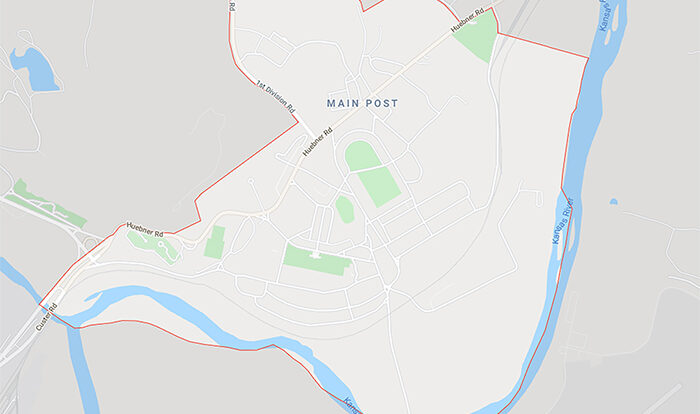Fort Riley Main Post Stormwater Study

Most of the stormwater infrastructure (pipes, structures, channels, etc.) at Fort Riley’s Main Post was constructed more than 60 years ago. Given the age of the facilities, there were few maps, as-builts, or internal historical knowledge about the stormwater system. Fort Riley’s Directorate of Public Works (DPW) was addressing system problems only after they surfaced but wanted a comprehensive improvement plan that considered all the Main Post’s needs and worked proactively to help them plan future improvements.
Working with the United States Army Corps of Engineers (USACE), the Affinis team was selected to perform a stormwater study for the Main Post and provide DPW with a comprehensive stormwater system improvement plan.
To begin the project, our team surveyed the site. Using the data gathered, we created a GIS model, which was used to locate pipe segment information. The model was also added to the existing USACE database to unify and update their records. In addition, it was put into EPA SWMM (a stormwater hydraulic computer modelling software) to identify pipe and channel capacity issues.
Along with the GIS model, we video inspected about 20 percent of the pipe segments. Given the age of the storm sewer system, we did not inspect corrugated metal, clay, or cast-iron pipe segments, which we suspected were well beyond their design life. Rather, the video inspection focused on key reinforced concrete pipe segments to best assess the overall condition of the Main Post storm sewer system. From system condition assessment, we developed a rating for every pipe segment.
Using data from the hydraulic capacity evaluation and condition assessment, our team rated each storm sewer segment, which included approximately 500 pipe segments for the project.
We then grouped pipe segments of similar assessment ratings into clusters to develop meaningful improvement project areas. These project areas allow the DPW to replace a group of pipes of similar rating together, as opposed to tackling projects one segment at a time.
The final step for this study was to develop preliminary costs for the improvement project clusters. This cost information allows DPW to plan for future projects and prioritize their maintenance dollars from year to year.